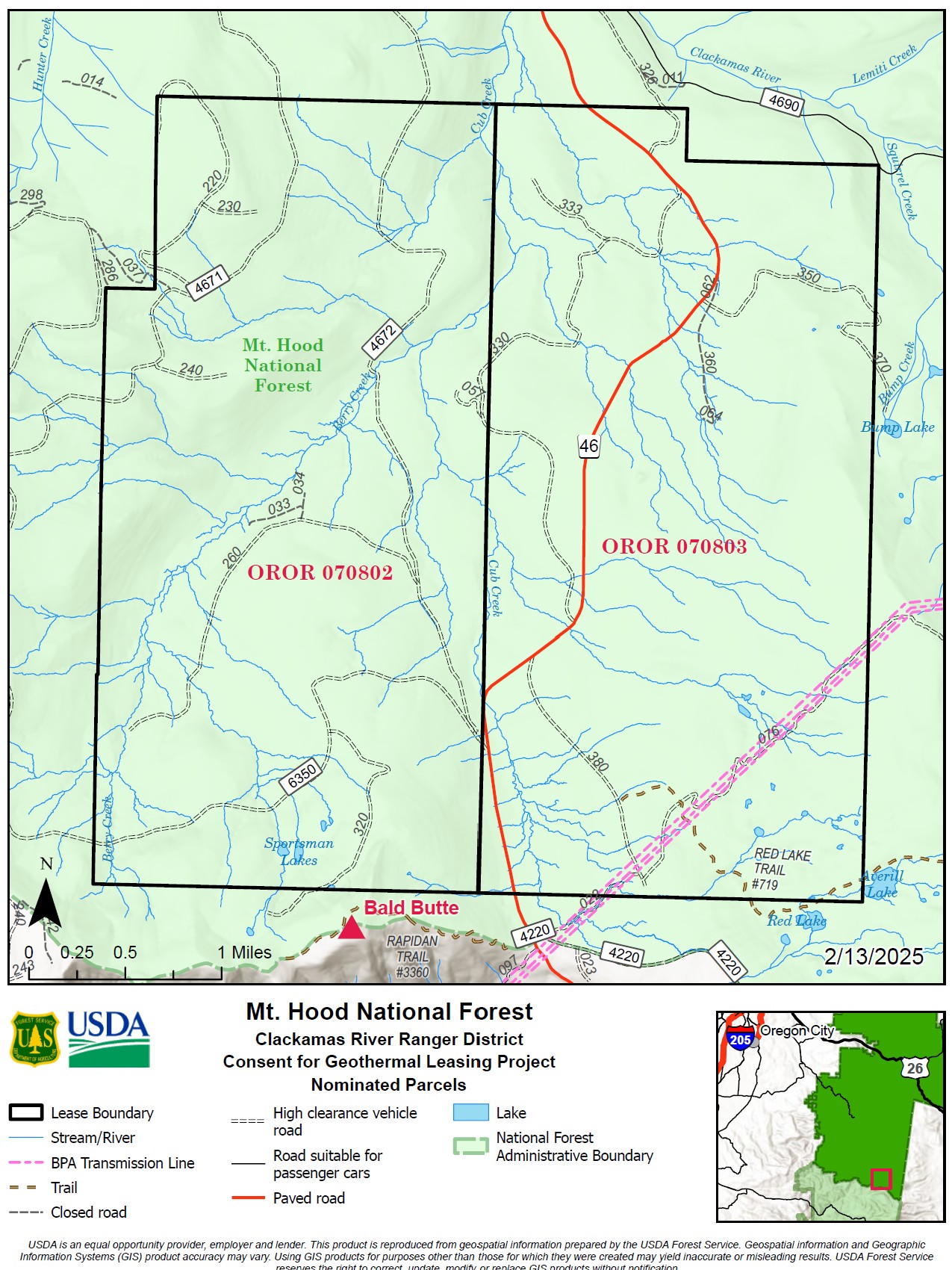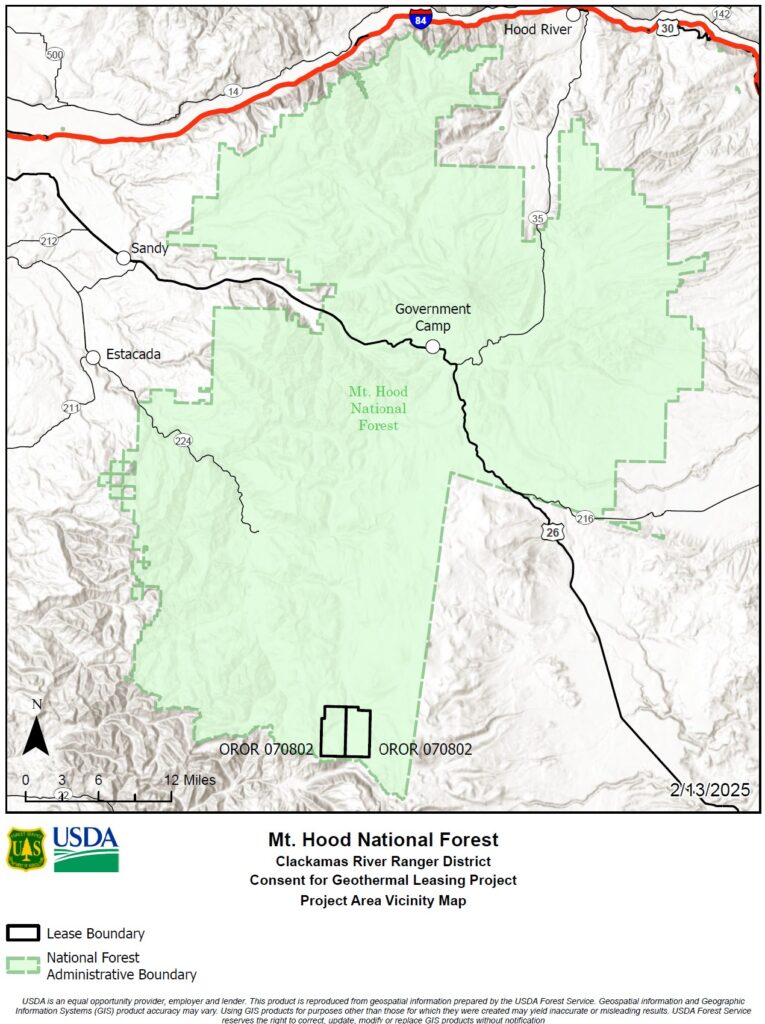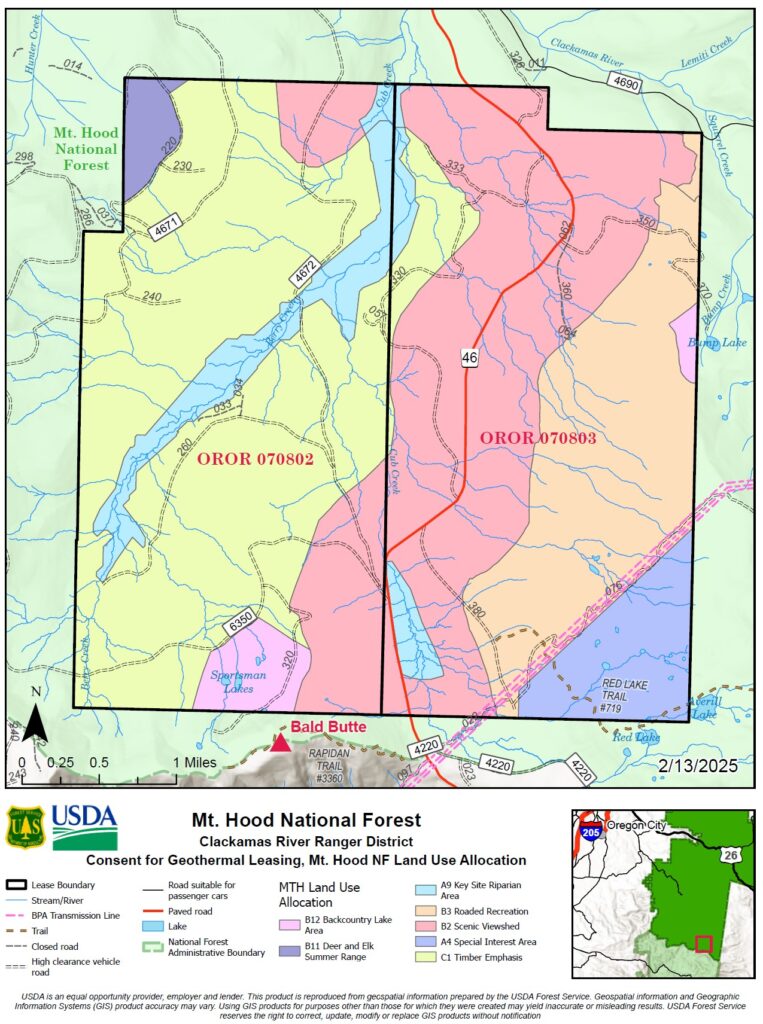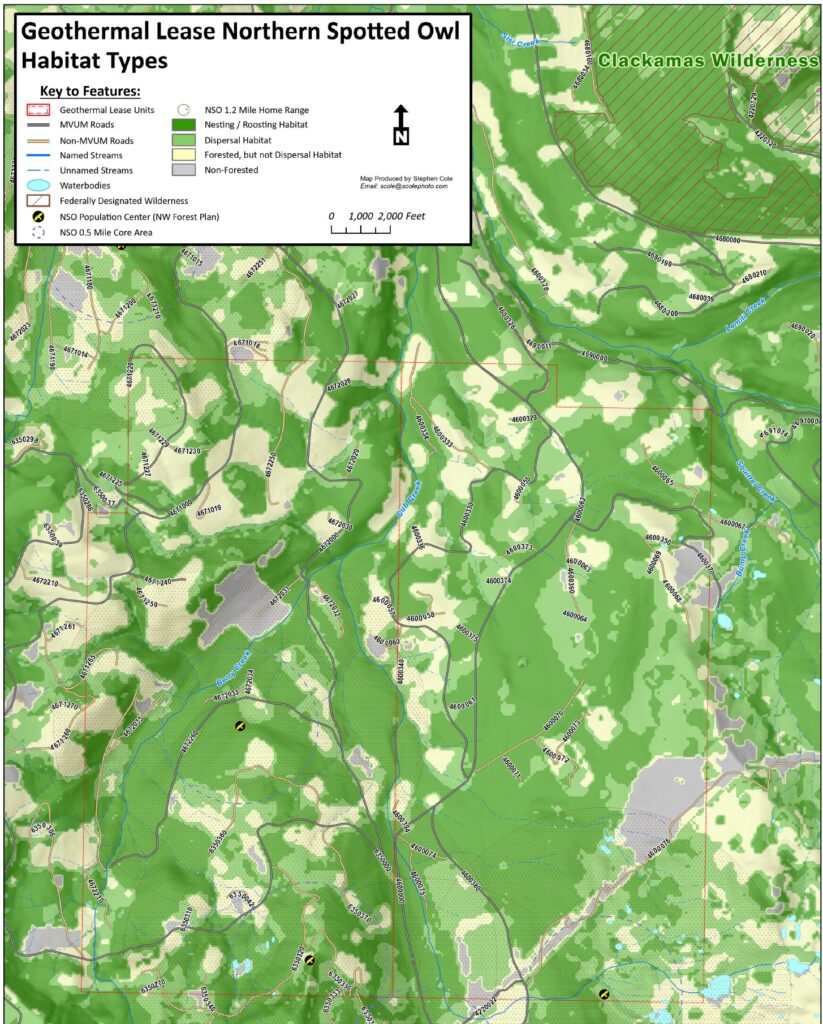Action Alert: Comment on proposed geothermal project on Mt. Hood and changes to the Endangered Species Act!

Comment on proposed geothermal leases on MHNF!



The Bureau of Land Management (BLM) has requested the Forest Service’s consent to offer two parcels of land totaling 10,130 acres on Mt Hood National Forest for potential geothermal energy exploration and development. The two parcels are located in the SE corner of the Clackamas River Ranger District.
While Bark recognizes the urgent need to decarbonize Oregon’s electricity sources, we have several concerns about this particular project:
- Both of these parcels contain designated northern spotted owl critical habitat (95% of Parcel OROR 070802 and 41% of Parcel OROR 070803)
- A quarter of the lands in question are designated as Late Successional Reserves, which are supposed to be managed to “protect and enhance conditions of late-successional and old-growth forest ecosystems”
- The project area also contains designated critical habitat for coho salmon and steelhead trout, and is just downstream of designated critical habitat for Chinook salmon
For these and many other reasons outlined on our website, Bark opposes the inclusion of Parcel OROR 070802 in this project.
The Forest Service has opened a 30-day comment period as it weighs whether to lease the lands outright, lease them with stipulations, or withdraw them from further consideration for leasing. That’s where you come in! Use the talking points on our website to submit a public comment by the May 16th deadline.
Action Alert #2! Comment on proposal to rescind the Endangered Species Act’s definition of harm
The Fish and Wildlife Service and the National Marine Fisheries Service recently proposed a new rule that could limit the scope of Endangered Species Act (ESA) protections. Currently, the ESA prohibits certain actions that “harass, harm, pursue, hunt, shoot, wound, kill, trap, capture, or collect” threatened and endangered organisms. Until now, “harm” was understood to include actions that significantly impact an organism’s habitat. But the proposed rule change would rescind the regulatory definition of “harm,” limiting the Act’s prohibitions to actions that directly injure or kill listed species. This rule change flies in the face of settled science showing that habitat loss is the number one threat to endangered species, and biodiversity more broadly.
The agencies are accepting public comments on the proposed rule change until May 19th. Submit your comment here.
Updated map of lands subject to Timber expansion EO now available
The Forest Service has released an interactive map of areas designated as Emergency Situation Determination lands under the USDA Secretary’s Memo 1078-006: Increasing Timber Production and Designating an Emergency Situation on National Forest System Lands. The lands in question have been designated as either being at risk from insect and diseases under the Healthy Forest Restoration Act or have a high or very high wildfire hazard potential, and are thus subject to the expedited timelines for project approval and rollbacks of environmental regulations outlined in the Secretary’s memo and subsequent memos.
This map provides an important correction to a previous email we sent out that mistakenly suggested that all of MHNF would fall under this designation. Check out the map here.
Republicans sneak provision authorizing sale of public lands into reconciliation bill
Despite claiming that federal land sales wouldn’t be included in their budget reconciliation bill, House Republicans snuck an amendment authorizing just that into the bill and approved it at 2 am yesterday morning. The amendment would sell about 11,000 acres of public lands in Nevada and Utah.
The move is widely seen as part of a broader plan by the current administration to sell off or lease all public lands to pay for tax cuts and prop up oil, gas, timber, and other extractive industries.
That’s all for now, folks. Watch this space for updates. And check out our events page for ways to get involved in the meantime.